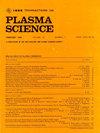一种用于抑制大功率脉冲负载闪烁的单级恒功率电容器充电结构
IF 1.5
4区 物理与天体物理
Q3 PHYSICS, FLUIDS & PLASMAS
引用次数: 0
摘要
用于脉冲功率负载的电容充电器通常实现为两级系统,由前端整流器和后跟dc/dc变换器的ink滤波器组成。虽然这种系统通常在恒流充电模式下工作,但最近已经证明可以实现恒功率充电,并且可以有效地消除线侧闪烁。在本文中,这些想法被扩展到单级电容器充电器架构中,其中控制三相电压源转换器的调制指数,以主动塑造线电流波形,消除无功功率和电流谐波,并提供恒定的功率电容器充电,从而消除闪烁。详细介绍了控制方案,并提出了一种控制器设计方法。最后,基于欧洲散裂源速调管调制器要求(脉冲幅度115 kV/100 a,脉冲长度3.5 ms,脉冲重复率14 Hz)的案例研究评估了所提出方法的性能。通过电路仿真验证了所设计的电容式充电器,并与现有的电容式充电器方案进行了比较。本文章由计算机程序翻译,如有差异,请以英文原文为准。
A Single-Stage Constant Power Capacitor Charging Architecture for Flicker Mitigation for High-Power Pulsed Loads
Capacitor chargers for pulsed power loads are typically realized as two-stage systems consisting of a front-end rectifier and a dclink filter followed by a dc/dc converter. Whereas such systems generally operate in constant current charging mode, it has recently been demonstrated that constant power charging may be achieved and can effectively eliminate line-side flicker. In this article, these ideas are extended to a single-stage capacitor charger architecture in which the modulation index of a three-phase voltage source converter is controlled to both actively shape the line current waveforms, eliminating reactive power and current harmonics, as well as to provide constant power capacitor charging, thereby eliminating flicker. A detailed description of the control scheme is presented, and a method for controller design is proposed. Finally, the performance of the proposed method is assessed in a case study based on European Spallation Source klystron modulator requirements (pulse amplitude 115 kV/100 A, pulselength 3.5 ms, pulse repetition rate 14 Hz). The designed capacitor charger is validated through circuit simulation and compared to the existing capacitor charger solution.
求助全文
通过发布文献求助,成功后即可免费获取论文全文。
去求助
来源期刊

IEEE Transactions on Plasma Science
物理-物理:流体与等离子体
CiteScore
3.00
自引率
20.00%
发文量
538
审稿时长
3.8 months
期刊介绍:
The scope covers all aspects of the theory and application of plasma science. It includes the following areas: magnetohydrodynamics; thermionics and plasma diodes; basic plasma phenomena; gaseous electronics; microwave/plasma interaction; electron, ion, and plasma sources; space plasmas; intense electron and ion beams; laser-plasma interactions; plasma diagnostics; plasma chemistry and processing; solid-state plasmas; plasma heating; plasma for controlled fusion research; high energy density plasmas; industrial/commercial applications of plasma physics; plasma waves and instabilities; and high power microwave and submillimeter wave generation.
 求助内容:
求助内容: 应助结果提醒方式:
应助结果提醒方式:


